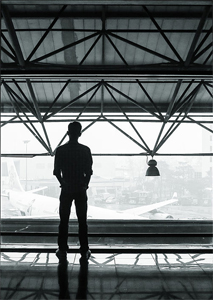 On October 22, a room full of eager PR practitioners gathered at Rosa Mexicano at L.A. Live! for PRSA-LA’s “Travel and Tourism PR: The 21st Century World in a Nutshell.” The panel, moderated by Susan Lomax of Princess Cruises, included a lively discussion of trends and recent crises affecting PR in the travel and tourism industry.
On October 22, a room full of eager PR practitioners gathered at Rosa Mexicano at L.A. Live! for PRSA-LA’s “Travel and Tourism PR: The 21st Century World in a Nutshell.” The panel, moderated by Susan Lomax of Princess Cruises, included a lively discussion of trends and recent crises affecting PR in the travel and tourism industry.
Much of the panel’s discussion centered on new digital technologies, highlighting how both PR professionals and journalists are adjusting their use. According to panelist Julie Benson (Princess Cruises), her job is now 50 percent marketing/PR and 50 percent crisis communications, and social media is the main reason why.
Here are some of the key insights shared at the event, as captured by a pair of L.A. Connect contributors. The editors thank PRSA-LA Board Member Rebecca Mikkelsen, APR of Doug Hay & Associates, and Heather Youmans of HK Strategies for sharing their notes with us.
- Pitch with Purpose. According to panelist Hugo Martin (Los Angeles Times), most days in the newsroom begin with an inbox stuffed with at least 75 new pitches. With limited time, he scans for pitches with high relevance, especially those with clear news hooks that explain why readers will care. Analytics play a role in story selection, given that story pageviews are all-important metrics.
- Embrace Better Bloggers. Not all self-professed travel experts are credible. As moderator Susan Lomax quipped, “we’re often pitched by bloggers; some are good, and some just want a free trip.” Panelist Julie Benson advised PR experts to screen bloggers’ credentials carefully, and to see the best bloggers as key influencers. Both the blogger and your relationship to him or her should be professional, because at some point you may need to give a blogger access to a high-value client.
- Reposition Proactively. During the Great Recession, many vacationers stayed put, while those who could still afford to travel became concerned about the “optics” of staying at 5-star hotels. Event organizers also shied away from luxury resorts so as not to appear insensitive to hardships posed by the rough economy. Stacey Lewis (Murphy O’Brien Public Relations) revealed that hotel clients are now repositioning themselves and the luxury travel experience, crafting new storylines that highlight experiences (such as time with one’s family), instead of luxury for its own sake.
- Always Be Authentic. Companies have a clear need for open and honest communication with journalists and key stakeholders. According to Elizabeth Harryman (Westways/AAA Magazine), successful PR requires helping journalists “get under the surface” of a typical hotel, destination or cruise experience. And later, should a crisis put you under pressure, you’ll be in a better position to speak off the record or admit, “we don’t have the answer, but we’re working on it.”
- Preparedness is Everything. The rise of citizen journalism and social media has made controlling the story much more difficult in times of crisis. After the LAX Terminal 3 shooting in November 2013, Mary Grady (LA World Airports LAWA/LAX) responded quickly using pre-written tweets and hashtags covering a range of potential emergencies. This action helped LAX take hold of the situation and storylines quickly.
View photos from the event on Facebook.
For news about upcoming PRSA-LA events, please see our Events Calendar.








